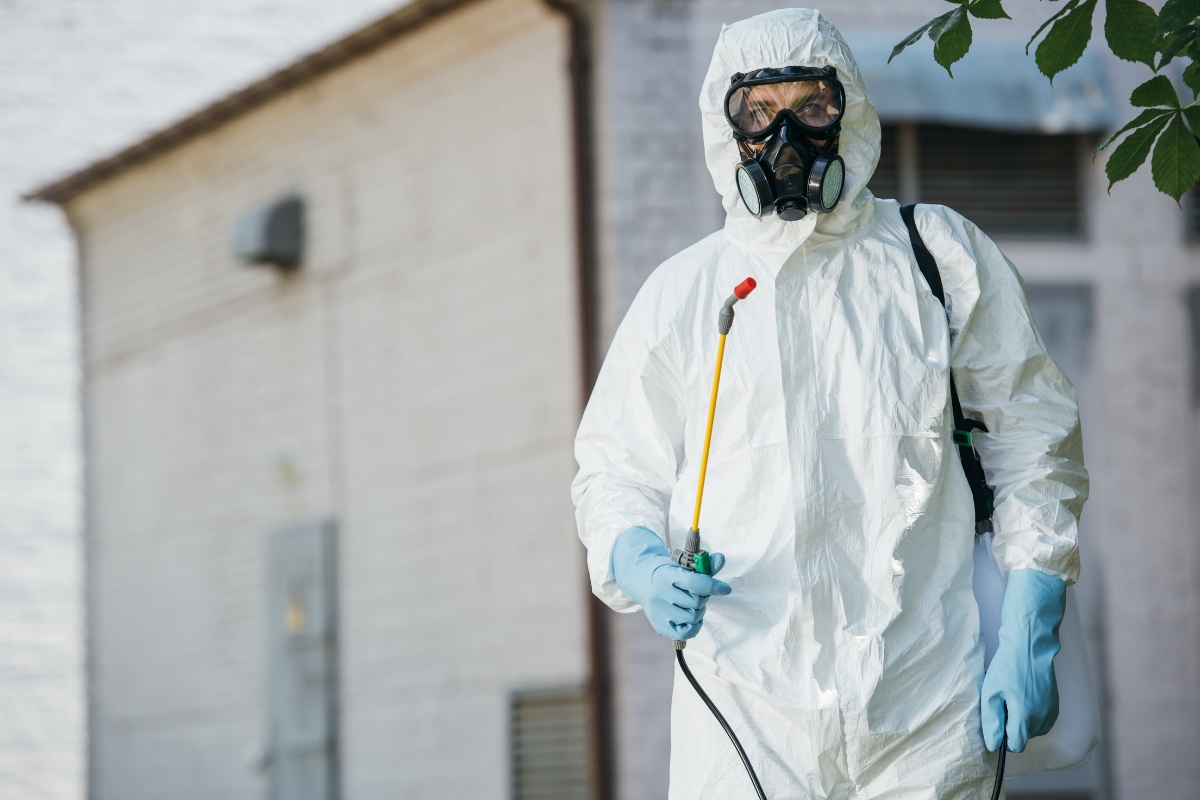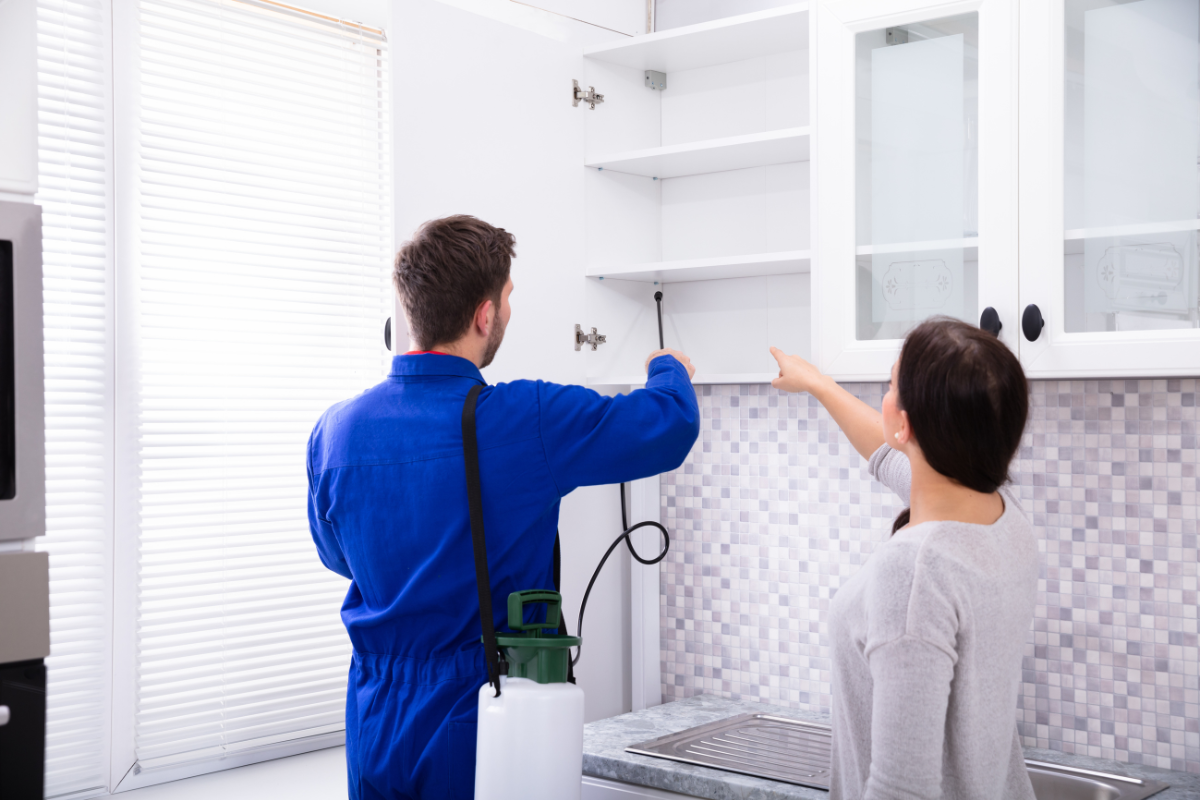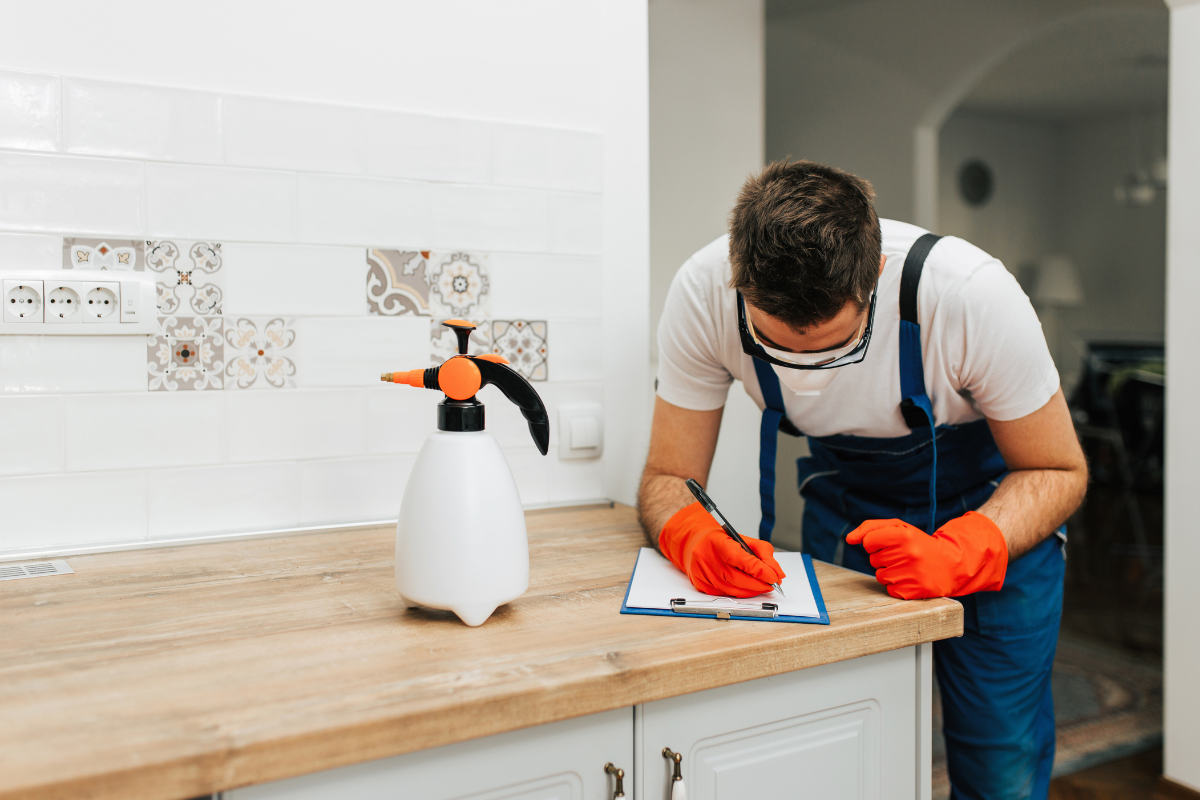


The first visit from an exterminator gets the attention, but the second and third visits are where the strategy proves itself. Pests rarely vanish on a single pass, especially if you’re dealing with entrenched colonies, hidden moisture problems, or structures with lots of entry points. A follow-up exterminator appointment isn’t just a quick spray and goodbye. It’s a progress review, a course correction, and often, the moment when small details determine long-term success.
I’ve walked more crawlspaces than I care to count and watched properties of every kind go from frantic to stable through a well-executed follow-up plan. Here’s how that appointment usually unfolds, what the pest control company is measuring, and how you can help the treatment work better and last longer.
Why a follow-up matters more than you think
Most pests work on cycles. Roaches lay oothecae that hatch weeks later. Bed bugs can go dormant, then feed and reproduce once the coast feels clear. Ant colonies may have multiple queens and satellite nests, and what looks like victory after a first treatment can be a temporary retreat. A reputable exterminator service builds these realities into the schedule, spacing visits to interrupt life cycles and reinforce control in the right windows.
There’s also the building itself. You can kill mice, but if the gap under the garage door remains, the building keeps hiring new tenants. Moisture under a bathroom cabinet will keep beckoning silverfish and roaches. The follow-up appointment is where technicians confirm that environmental fixes are taking hold, not just the chemical applications.
Timing: what the calendar says about your pest
Expect the follow-up window to match the biology and product labels. For general crawling insects like German cockroaches, 2 to 3 weeks between the initial and follow-up visit is common. That window lets hatchlings emerge and contact residuals or baits. For bed bugs, follow-ups often occur at 10 to 14 days, then again at 3 to 4 weeks, depending on heat or chemical use and the severity of the infestation. Ants typically need a check 1 to 3 weeks after bait deployment to assess colony suppression, then again if trails resume. For rodents, the second visit is often inside a week to remove carcasses, rotate bait placements, and seal new entry points once activity drops.
Good contractors schedule based on findings, not just a calendar. If a technician encounters heavy activity during the first treatment, they might tighten the follow-up window to prevent a rebound. A lighter issue can stretch farther. The point is responsiveness, not a one-size template.
What happens the moment your technician arrives
You will usually get a short interview at the door. A seasoned technician starts by asking what you’ve seen since the first appointment: times of activity, rooms affected, whether bait stations were disturbed, new droppings, smells, or bites. Specifics matter. For example, roach sightings in the daytime often signal a heavy population or bait aversion. Ants that shifted from the kitchen to the laundry room might be following a moisture source or a new trail you didn’t notice.
With those notes in mind, the technician revisits the zones treated the first time. Expect them to:
- Inspect monitors and stations for hits, consumption, and trends. Check harborage points with a flashlight and mirror, sometimes a moisture meter if the job calls for it. Evaluate the condition of seals, door sweeps, and mesh installed during the initial visit. Re-scan for conducive conditions: standing water in plant trays, crumbs under appliances, cardboard stacks in storage corners, or dense vegetation up against exterior walls.
The follow-up is more targeted than the initial visit. Instead of broad coverage, you’ll see focused re-treatments, bait rotations if needed, and more attention to the routes pests use to bypass your strong points.
How technicians decide whether treatments are working
Results aren’t judged by a single metric. A competent pest control service blends direct observations with data gathered from traps and your feedback. Here’s what often carries the most weight:
- Monitor captures compared to the last visit. For example, sticky traps with fewer roaches but more small nymphs may indicate hatch-outs hitting residuals, which is progress. For rodents, bait consumption decreasing over consecutive checks, plus fewer droppings and smear marks, signals a shrinking population. Behavioral clues. Ants feeding steadily on non-repellent bait then disappearing from view, with no new trails inside, suggests the colony is being affected. Conversely, ants refusing bait after a day or two might mean the food matrix isn’t appealing or a repellent spray was used incorrectly in the same zone, driving avoidance. Environmental progress. If you fixed leaks, added dehumidification, and sealed the door sweep, the technician expects to see less pest pressure. Persistent moisture or new clutter undermines otherwise solid treatment.
If results aren’t on track, the follow-up is where a pest control contractor makes tactical shifts. That might mean swapping bait types, altering placement, adding mechanical methods, or adjusting intervals between visits.
What a follow-up looks like for specific pests
Each pest brings its own choreography. You’ll get more value from the appointment if you know what the technician is checking and why.
Cockroaches
German cockroaches require patience and precision. On follow-up, the technician will revisit kitchens and bathrooms, especially appliance motors, cabinet hinges, drawer voids, and the undersides of sinks. They will look for smeared frass, egg casings, and live movement when disturbed. It’s common to spot young nymphs after the first round, which often means the residuals are intercepting hatchlings.
Technicians may rotate baits if they suspect palatability issues. Some buildings develop bait aversion after repeated use of the same formulation. Strategic dust applications in wall voids or under toe kicks might be refreshed, but the pro will avoid contaminating bait placements with repellent sprays. If you cleaned aggressively around baited zones, let the technician know. Over-cleaning can remove the very products that do the work.
In multi-unit buildings, the best exterminator companies escalate follow-ups to adjacent units when roach activity persists. Roaches migrate through plumbing chases and wiring cutouts, and isolated treatment can stall out if neighbors remain untreated. Expect that conversation if the building owner or HOA is involved.
Ants
Follow-ups after ant baiting are part patience, part detective work. The technician will track trails back to entry points or structural cracks, then assess whether foragers are still feeding on bait. If the bait was over-sprayed with a repellent product, ants can be pushed away without reaching the queen, which explains “they disappeared, then came back.” A solid pest control company keeps repellents away from bait trails and uses non-repellent residuals where necessary so ants ferry the active ingredient back to the colony.
Shifting to different bait matrices, like a protein-based product in spring and a carbohydrate-based product later, is common. Seasonal nutrition drives preferences. If you set out your own store-bought bait during the interval, mention it. Mixing formulations or placing competing bait near professional placements can dilute the effect.
Rodents
For mice, the follow-up hinges on what the traps and bait stations report. The technician will collect carcasses, reset or relocate traps, and reseal any fresh gnaw points. You’ll often get a candid conversation about hygiene, storage, and landscaping. I’ve seen a 50 percent drop in mouse captures simply by lifting stored cardboard off concrete and trimming ground cover six inches away from the foundation. For rats, exterior sanitation matters even more. Open trash, bird feeders, and ivy against walls can undo a week of progress.
If bait blocks inside stations are being eaten quickly, the technician may increase the number of stations, add snap traps in protected spots, or recommend a short-interval revisit. Strong odors in closed spaces hint at a carcass in a void; a good contractor will help locate and remove it when feasible or apply odor neutralizers if access is impossible.
Bed bugs
Bed bug follow-ups demand thoroughness. The technician will re-inspect sleeping areas, seams of mattresses and box springs, screw holes in bed frames, headboards, and nearby baseboards. They may lift outlet covers to check harborages and re-treat cracks with labeled residuals or dust. If a heat treatment was done initially, the follow-up focuses on confirmation and touch-ups in cool spots that may have sheltered survivors.
Expect emphasis on preparation. If laundry wasn’t fully completed or items returned from an untreated vehicle or storage bin, re-introduction becomes likely. A competent exterminator service will be candid about whether a third visit is prudent. In many cases, two to three carefully spaced appointments close the loop.
Termites
With termites, the follow-up confirms whether bait stations show feeding and whether liquid termiticide barriers remain intact. You may see the technician probing for mud tubes again, measuring moisture, and scanning landscaping that bridges treatment zones. Termite work involves longer timelines, often months, to verify colony decline. Documentation during follow-ups is key. A reputable pest control company will provide service tickets with station maps, consumption notes, and next steps.
Safety, access, and what to do before the doorbell rings
You can do small things that make a big difference. Clear the toe-kicks under kitchen and bathroom cabinets. Pull lightweight appliances a few inches if safe to do so. Pick up pet bowls and cover aquariums. Make sure keys or codes are ready for locked utility rooms and exterior gates. If the technician needs attic or crawlspace access, clear that path and have a https://messiahwvac217.trexgame.net/how-to-vet-a-pest-control-company-certifications-reviews-and-red-flags light available even if they carry one.
If you have children or pets, ask whether any treated surfaces need to remain undisturbed for a period. Most modern products used by licensed exterminator companies are labeled for indoor use with low odor and sensible re-entry times, but following directions keeps everyone safe. Share any recent renovations or cleaning chemicals used, as these can affect residuals and baits.
What not to do between visits
Lots of well-intended actions slow progress. Over-spraying store-bought repellents near professional bait placements is a common issue. So is heavy mopping that washes away residual treatments along baseboards. Throwing out every cardboard box without thinking can eliminate harborage, which is good, but if you shake boxes in the living room before taking them out, pests spread further inside. If you’re unsure, ask your pest control contractor for a simple set of do’s and don’ts tailored to your treatment plan.
Also be careful with self-set glue boards in random places. They can help, but I often see them used where they collect dust, not pests, while interfering with professional placements. Coordinated placement beats guesswork.
The conversation you should expect during the visit
Follow-ups are collaborative. A strong technician explains what changed, what improved, and what still needs work. You should hear plain language about:
- Activity trends since the initial visit. Product adjustments, with reasons tied to behavior or label requirements. Environmental recommendations that are specific, not generic. Clear expectations for the next 1 to 3 weeks, including what you should monitor.
If your exterminator company leaves a vague “we treated” note and nothing more, ask for detail. Good records help both of you make smarter decisions and shorten the overall timeline.
When plans need to change
Sometimes the original plan falls short. Bait refusal, unexpected moisture problems, construction voids that weren’t accessible, or a nearby vacant unit teeming with pests can force a rethink. I’ve retooled ant programs by switching from gel to granular baits and kept sprays off trails entirely, which turned a stubborn case around in a week. With rodents, I’ve paused interior baiting when a property owner had a curious dog and shifted to snap traps in covered stations plus aggressive exclusion. Flexibility matters.
If the same approach hasn’t moved the needle by the second follow-up, a frank discussion is in order. You may need broader coverage, different formulations, or building repairs before more chemical work makes sense. Your pest control service should be comfortable saying so.
Service plans, warranties, and what fair results look like
Not all contracts are equal. Some exterminator companies include two follow-ups in a standard plan, others build a monthly schedule until a certain threshold of activity is reached. True “eradication” is an honest promise for bed bugs and German roaches in isolated settings when prep is solid, but in dense multi-unit properties or homes with chronic moisture, the goal is control with ongoing maintenance.
Read the warranty language. Warranties might cover re-treatments for a defined period, but they usually depend on you implementing recommended repairs or sanitation. For termites, warranties often require annual inspections to stay valid. If you’re shopping for a pest control contractor, ask how they measure success, how often they update bait formulations, and whether they document each step. The best companies prefer transparency over quick, cosmetic wins.
What a “win” looks like after two to three visits
Progress is not always zero pests. With cockroaches, seeing occasional small nymphs that die off near residues can be expected for a few weeks while the population collapses. For ants, a few scouts may reappear seasonally as weather shifts, but sustained trails or winged swarmers indoors are warning signs. With rodents, silence in the walls, clean stations, and undisturbed tracking dust corridors tell you you’re nearly there.
The technician should be able to show you tangible indicators: empty traps that had been busy, bait blocks with decreasing bite marks, monitors with fewer captures, and cleaner harborage areas that were previously active. If evidence contradicts your lived experience, compare notes. Sometimes pests are active at night between 2 and 5 a.m., other times at dusk. Strategically placed cameras or fresh tracking powders can resolve the discrepancy.
Cost expectations for follow-ups
Pricing varies by market and pest, but a reasonable pattern exists. Many pest control companies bundle at least one follow-up into the initial fee for insects like roaches and ants. Additional visits might be billed at reduced rates or included in a service plan. Bed bug programs are often priced per room with two to three visits included, plus charges if prep must be done by the crew. Rodent services can be a flat fee for initial setup plus per-visit charges for rechecks until activity ends, especially where exclusion work is involved. Termite follow-ups are typically built into the larger treatment price with ongoing monitoring fees annually.
If a quote seems suspiciously low and promises a one-time fix for an entrenched problem, ask for specifics. Sustained control costs less than crisis calls, but it requires those follow-ups to be real, not perfunctory.
What I’ve seen move the needle fastest
I’ve watched small changes speed up control more than big chemical decisions. The standout wins are boring but powerful.
- Consistent moisture reduction. Fixing a slow leak under a sink lowered roach pressure in a kitchen faster than doubling bait placements. Focused decluttering. Clearing two feet of space around garage walls let us set and service rodent equipment properly, cutting captures in half within two weeks. Food control. Pet food stored in sealed containers and feeders picked up at night broke ant cycles even before the second visit. Sealing micro-gaps. A quarter-inch gap under a side door produced nightly mouse incursions. One new sweep and a bead of sealant made three interior traps go quiet.
Ask your exterminator service to prioritize the top two structural or sanitation changes likely to help. Do those well before the next visit, then reassess together.
Finding the right rhythm after the problem is solved
Once the pests are down to a dull roar or gone, maintenance keeps it that way. Quarterly exterior perimeter treatments for general invaders, a quick annual attic and crawlspace check for rodents before cold weather, or seasonal ant baiting in spring can save you from starting over. If you manage a multi-unit property, short hallway inspections and routine trash area sanitation pay for themselves in fewer emergency calls.
Don’t let the calendar drift. Set reminders aligned to your building’s pattern. In humid climates, mold and moisture swing the door open for pests; in arid regions, irrigation lines and shaded foundations do the same. Your pest control company should tailor the maintenance plan to your property’s quirks and the surrounding environment.
A brief checklist to make your follow-up count
- Share exact observations: where, when, and how many. Photos help. Clear access to kitchens, baths, attics, crawlspaces, and utility closets. Avoid spraying over baited areas between visits; ask before using cleaners along baseboards. Fix the top one or two conducive conditions your technician flagged. Confirm next steps and timing before they leave, along with any prep you need to do.
The bottom line on follow-ups
A follow-up exterminator appointment is where expertise shows. It is less about repeating the first treatment and more about reading the building, adjusting tactics, and reinforcing what is working. The right pest control contractor blends biology, building science, and practical constraints to push the problem downhill with each visit. You do your part by reporting clearly, making small environmental changes, and resisting improvised fixes that collide with the plan.
When those pieces align, two to three visits often turn a stubborn infestation into a manageable memory. And if the first approach stalls, the follow-up is precisely when a good exterminator company proves its value by changing course with purpose, not guesswork.
Clements Pest Control Services Inc
Address: 8600 Commodity Cir Suite 159, Orlando, FL 32819
Phone: (407) 277-7378
Website: https://www.clementspestcontrol.com/central-florida